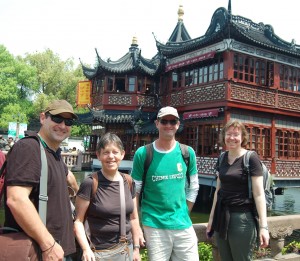Hurry! These articles are free to access until 5th June 2012…
“Preparation of graphene-TiO2 composites with enhanced photocatalytic activity”
K. Zhou, Y. Zhu, X. Yang, X. Jiang and C. Li
New J. Chem., 2011, 35(2), 353–359. DOI: 10.1039/c0nj00623h — 30 cites
“Development of luminescent iridium(III) polypyridine complexes as chemical and biological probes”
K. K.-W. Lo, S. P.-Y. Li and K. Y. Zhang
New J. Chem., 2011, 35(2), 265-287. DOI: 10.1039/c0nj00478b — Perspective review — 21 cites
“Facile synthesis of an ultramicroporous MOF tubular membrane with selectivity towards CO2“
S. Aguado, C.-H. Nicolas, V. Moizan-Basle, C. Nieto, H. Amrouche, N. Bats, N. Audebrand and D. Farrusseng
New J. Chem., 2011, 35(1), 41-44. DOI: 10.1039/c0nj00667j — 16 cites
“Multifunctional ligands in transition metal catalysis”
R.H. Crabtree
New J. Chem., 2011, 35(1), 18-23. DOI: 10.1039/c0nj00776e — Focus review — 12 cites
“Fabrication of free-standing graphene/polyaniline nanofibers composite paper via electrostatic adsorption for electrochemical supercapacitors”
S. Liu, X. Liu, Z. Li, S. Yang and J. Wang
New J. Chem., 2011, 35(2), 369-374. DOI: 10.1039/c0nj00718h — 10 cites
“Guest-induced gate-opening of a zeolite imidazolate framework”
S. Aguado, G. Bergeret, M. P. Titus, V. Moizan, C. Nieto-Draghi, N. Bats and D. Farrusseng
New J. Chem., 2011, 35(3), 546-550. DOI: 10.1039/c0nj00836b — 9 Cites
“Application of ferrocene and its derivatives in cancer research”
C. Ornelas
New J. Chem., 2011, 35(10), 1973-1985. DOI: 10.1039/c1nj20172g — Perspective review — 8 cites
“Synthesis, characterisation and ethylene oligomerization behaviour of N-(2-substituted-5,6,7-trihydroquinolin-8-ylidene)arylaminonickel dichlorides”
J. Yu, X. Hu, Y. Zeng, L. Zhang, C. Ni, X. Hao and W.-H. Sun
New J. Chem., 2011, 35(1), 178-183. DOI: 10.1039/c0nj00516a — 8 cites
“Rare earths: jewels for functional materials of the future”
S. V. Eliseeva and J.-C. G. Bünzli
New J. Chem., 2011, 35(6), 1165-1176. DOI: 10.1039/c0nj00969e — Perspective review — 7 cites
“Tapping the near-infrared spectral region with bacteriochlorin arrays”
J. S. Lindsey, O. Mass and C.-Y. Chen
New J. Chem., 2011, 35(3), 511-516. DOI: 10.1039/c0nj00977f — Focus review — 7 cites
“A fluorometric/colorimetric dual-channel Hg2+ sensor derived from a 4-amino-7-nitro-benzoxadiazole (ANBD) fluorophore”
Z. Xie, K. Wang, C. Zhang, Z. Yang, Y. Chen, Z. Guo, G.-Y. Lu and W. He
New J. Chem., 2011, 35(3), 607-613. DOI: 10.1039/c0nj00773k — 7 cites
Citation data were taken from Thomson Reuters’ Web of Science® on May 22, 2012.
Comments Off on NJC’s Most Cited Papers from 2011





























